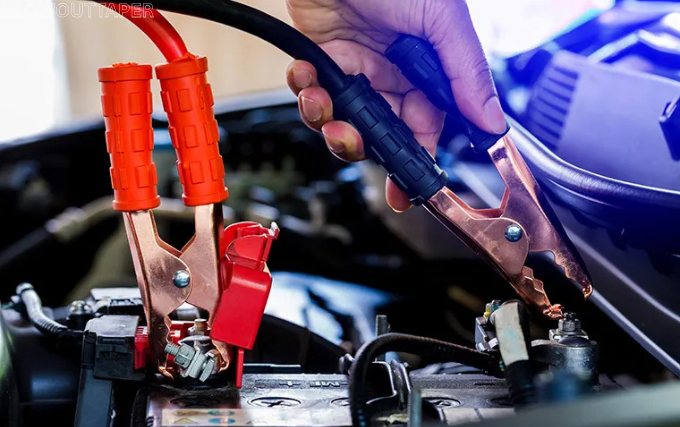In the bustling world of automotive technology, the humble car battery often goes unnoticed until it fails us at the most inconvenient times. Picture yourself rushing to a crucial meeting downtown, only to find your car refusing to start. The sense of panic can be overwhelming. But fear not, mastering the art and science of charging your car’s battery can save you from such predicaments and keep your vehicle running smoothly.
Understanding the Essentials
Before diving into the advanced techniques, it’s crucial to understand the basics of a battery charger. A battery charger is a device that replenishes the electric charge in a car battery. This process is essential for maintaining the health and longevity of your vehicle’s battery. Without regular charging, you might find yourself stranded, much like our friend Jason, who once ventured headlong into a remote camping trip, only to realize his battery had given up on him. A simple oversight in charging can lead to significant inconveniences.
The Importance of a Trickle Charger
One of the most effective tools at your disposal is the trickle charger. Unlike a standard battery charger, a trickle charger charges your car’s battery slowly, ensuring that it does not overcharge. This is particularly beneficial for cars that are not used daily. Imagine the satisfaction of winning a small victory each morning when your car starts without a hitch, thanks to a well-maintained battery. A trickle charger ensures your battery is always ready, preventing the slow discharge that can occur over time when a vehicle is not in use.
Choosing the Right Charger
The market is flooded with various types of battery chargers, each promising unique benefits. However, the key is to choose the one that suits your specific needs. Consider factors such as the type of vehicle, battery specifications, and usage patterns. For instance, if your vehicle is primarily used for daily commutes, a standard battery charger will suffice. Conversely, for those vehicles that spend most of their time in the garage, a trickle charger is your best bet.
The Science Behind Charging
Charging a car battery is not just about connecting a charger and waiting for the magic to happen. It’s a delicate dance of chemistry and electronics. At its core, a battery charger converts alternating current (AC) from a power source into direct current (DC), which is then fed into the battery. This process replenishes the battery’s depleted charge, allowing it to store energy once more.
However, it’s essential to monitor the charging process. Overcharging can lead to overheating, which can damage the battery and reduce its lifespan. Many modern chargers are equipped with automatic shut-off features, which prevent overcharging by stopping the current flow once the battery is fully charged.
Steps to Charge Your Battery Safely
1. Preparation: Before connecting your battery charger, ensure that the vehicle is turned off and parked on a level surface. This prevents any accidental movement during charging.
2. Connecting the Charger: Attach the charger’s positive (red) cable to the battery’s positive terminal, and the negative (black) cable to the negative terminal. Ensure the connections are secure to avoid sparking.
3. Monitoring the Process: Once connected, switch on the charger and monitor the charging process. Most chargers come with an indicator light or digital display showing the charge level.
4. Completion: Once the battery is fully charged, turn off the charger before disconnecting the cables. Start by removing the negative cable, followed by the positive one.
Maintaining Your Battery
Regular maintenance is key to extending the life of your battery. Clean the terminals to prevent corrosion, and periodically check the electrolyte levels if your battery requires it. Furthermore, ensure that the battery is securely fastened within its compartment to prevent vibrations that can cause damage.
Anecdote: The Downtown Dilemma
Let’s take a moment to delve into the story of Sarah, a young entrepreneur who often navigates the bustling streets of downtown for her business meetings. One morning, as she prepared to leave for an important presentation, her car refused to start. The culprit? A neglected battery. Fortunately, Sarah had invested in a reliable battery charger, which saved her from a potential disaster. The experience taught her the invaluable lesson of routine battery maintenance, a small yet significant win in her busy life.
The Emotional Connection
Owning a vehicle is more than just a practical necessity; it’s an emotional journey. The freedom of the open road, the thrill of a spontaneous road trip, and the reliability of daily commutes are all contingent on a well-maintained battery. By mastering the art of charging, you not only ensure your vehicle’s readiness but also forge a deeper connection with your car.
Final Thoughts
In the end, the art and science of charging your car’s battery is not just about technical know-how. It’s a commitment to care and maintenance that ensures your vehicle serves you reliably. The role of the battery charger and trickle charger in this journey cannot be overstated. By integrating these tools into your routine, you empower yourself with the knowledge and confidence to tackle any battery-related challenge head-on.
As you embark on this journey, remember the stories of Jason and Sarah, and the lessons learned through their experiences. With the right tools and a bit of foresight, you too can achieve the small victories that keep your world moving without a hitch.
